Neelima Vallangi presents photos and commentary of the people of Nagaland, a disappearing culture in Northeast India. Published by BBC Travel on February 16, 2015.
The state of Nagaland is one of the smallest in India and borders the state of Assam to the west, Arunachal Pradesh and part of Assam to the north, Burma to the east and Manipur to the south. The state capital is Kohima, and the largest city is Dimapur. It has an area of 16,579 square kilometres and a population of 1,980,602 per the 2011 Census of India.
Nagaland is inhabited by 16 major tribes and a number of sub-tribes. Each tribe is unique in character with its own distinct customs, language and dress. Two threads common to all is language and religion – English is in predominant use and Nagaland is one of three states in India where the population is predominantly Christian, with conversions having started during the British Raj era.
The state is mostly mountainous except those areas bordering Assam valley. Mount Saramati is the highest peak with a height of 3,840 metres and its range forms a natural barrier between Nagaland and Burma. It is home to a rich variety of flora and fauna and it has been suggested as the “falcon capital of the world.”
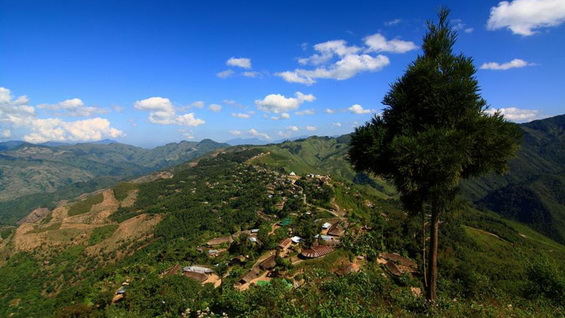
The largest tribe in Nagaland
The remote village of Longwa, with Myanmar’s dense forests on one side and India’s rich agricultural lands on the other, is home to the fierce Konyak Naga tribe. The largest of 16 tribes living in the remote northeastern Indian state of Nagaland, the Konyaks were warriors with brutal pasts, using inter-village fights to accede land and ascertain power. As such, Konyak villages are situated on ridge tops, so they can easily monitor and identify an enemy attack. (Neelima Vallangi)

The last generation
From the tribe’s conception centuries ago, until the gruesome practice was banned in 1940s, the Konyaks were fierce headhunters. Killing and severing an enemy’s head was considered a rite of passage for young boys, and success was rewarded with a prestigious facial tattoo. With the last headhunting case in Nagaland reported in 1969, older tribesmen like Pangshong (pictured) belong to the last generation with these striking facial tattoos. (Neelima Vallangi)
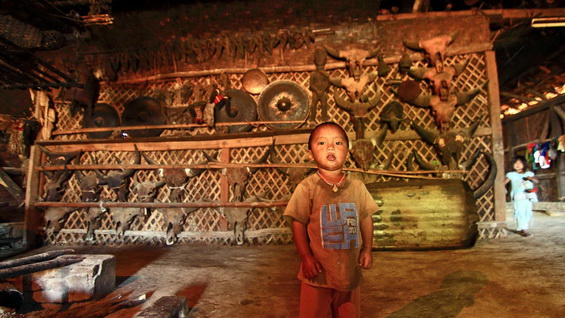
Skulls of battles past
Bones of buffaloes, deer, boars, hornbills and mithun (a bovine species found in northeast India) decorate the walls of every Konyak house – prizes from generations of hunting. During the tribe’s headhunting days, the skulls of captured enemies were also prominently displayed, but once headhunting was abolished, the skulls were removed from the village and buried. (Neelima Vallangi)

Spacious living quarters
Konyak huts are made primarily out of bamboo. They are spacious, with several partitions forming huge rooms for various purposes including cooking, dining, sleeping and storage. Vegetables, corn and meat are stored above the fireplace, in the centre of the house. Rice, the staple food of the Konyak Nagas, is usually stored in huge bamboo containers at the back of the house. Pictured here, a Konyak woman named Wanlem breaks the rice by beating it with a wooden log, readying it for a traditional sticky rice dish. (Neelima Vallangi)
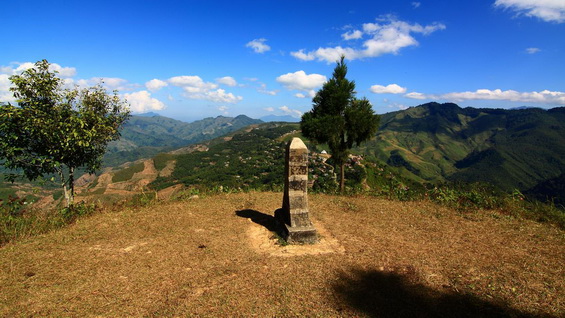
One tribe, two countries
Longwa was established long before the borders were drawn between India and Myanmar in 1970. Not knowing how to divide the community between two countries, officials decided that the border would pass through the village and leave the tribe undisturbed. Today, Longwa straddles the international border, with one side of the border pillar containing messages written in Burmese, and the other side written in Hindi. (Neelima Vallangi)
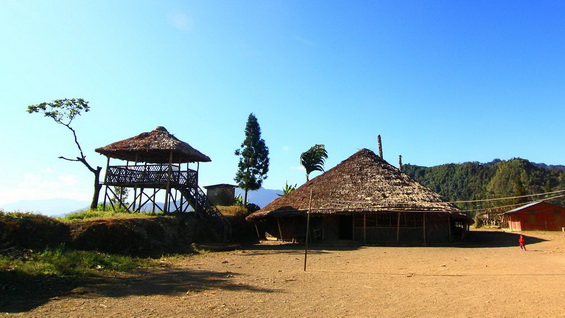
International housing
The border even cuts through the village chief’s house, prompting the joke that he dines in India and sleeps in Myanmar. (Neelima Vallangi)

Family gatherings
Konyaks are still ruled by hereditary chieftains, locally known as “Angh”, and one or several villages can come under each chieftain’s rule. The practice of polygamy is prevalent among the Anghs and the chief of Longwa has several children from many wives. Pictured here, several of the tribe’s children gather around the fire. (Neelima Vallangi)
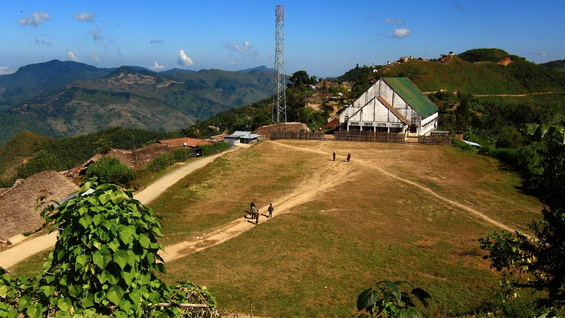
Changing beliefs
Konyaks were animists, worshipping elements of nature, until Christian missionaries arrived in the late 19th Century. By the late 20th Century, more than 90% in the state had accepted Christianity as their religion. Today, most of the villages in Nagaland have at least one Christian church. The church in Longwa is located in a vast field atop the ridge, right below the village chief’s house. (Neelima Vallangi)

Weekly traditions
Women wearing traditional Naga skirts return from church on a Sunday morning. (Neelima Vallangi)

A disappearing culture
A group of Konyak elders gather around the kitchen fire, chewing on betelnut, roasting corn and sharing a light moment. With the invasion of Christianity, many of the tribe’s traditional practices, such as training young boys as warriors and educating them about the tribe’s beliefs in dedicated community buildings called Morungs, have nearly disappeared. (Neelima Vallangi)
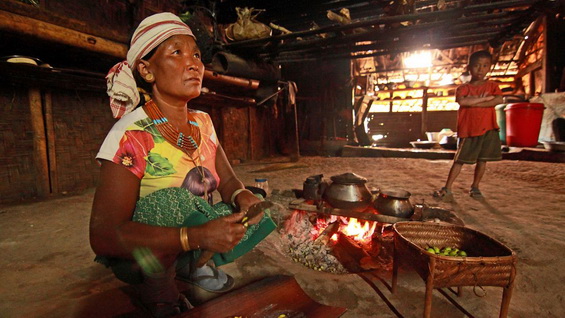
Decorative trophies
The practice of wearing colourful beaded jewellery is also declining. In the past, both men and women would wear elaborate necklaces and bracelets. Brass faces were used in some of the men’s necklaces to signify the number of enemy heads severed. (Neelima Vallangi)
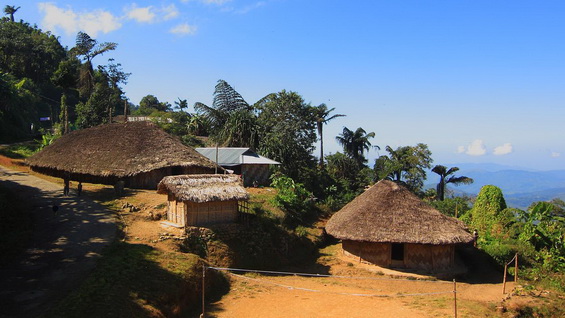
Change creeps in
Sheltered from the reaches of modern civilization, Longwa is a picturesque collection of thatch-roofed wooden houses. But the occasional tin roofs and concrete constructions are tell-tale signs that change is creeping into this rustic corner. What remains of this inevitable marriage between past and present is yet to be seen. (Neelima Vallangi)
Introduction by Osho News


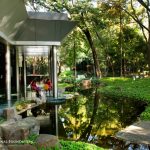
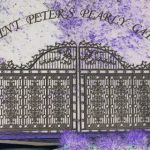
Comments are closed.